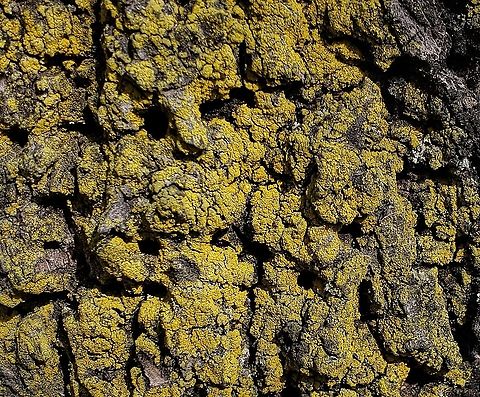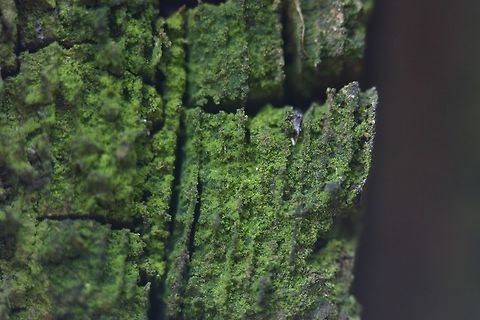
Appearance
As suggested by its name, "C. candelaris" is bright yellow, orange-yellow, or greenish-yellow. It has a powdery appearance, a superficial thallus and lacks apothecia, soredia and isidia. It covers the substrate like a crust and therefore belongs to the leprose group of lichens.Laundon described three chemotypes of this species: one with the chemical clycin, one with pinatric acid, and a third with both of these compounds.

Distribution
This lichen is widespread and common in the United Kingdom, being found on the bark of deciduous trees, especially rugged old specimens, such as sycamore, alder, oak, willow, beech, and Pinus species, normally in dry shaded parts. and occasionally on the sheltered faces of siliceous rocks. It is found in North America, Scotland, Hungary, Iran, Latvia and has been recorded in the Cape Verde Islands.
Behavior
Lacking apothecia, soredia and isidia, "C. candelaris" is not able to reproduce by spores, but spreads by its thallus becoming distributed by the wind, the feet of animals, etc. to suitable habitats.References:
Some text fragments are auto parsed from Wikipedia.